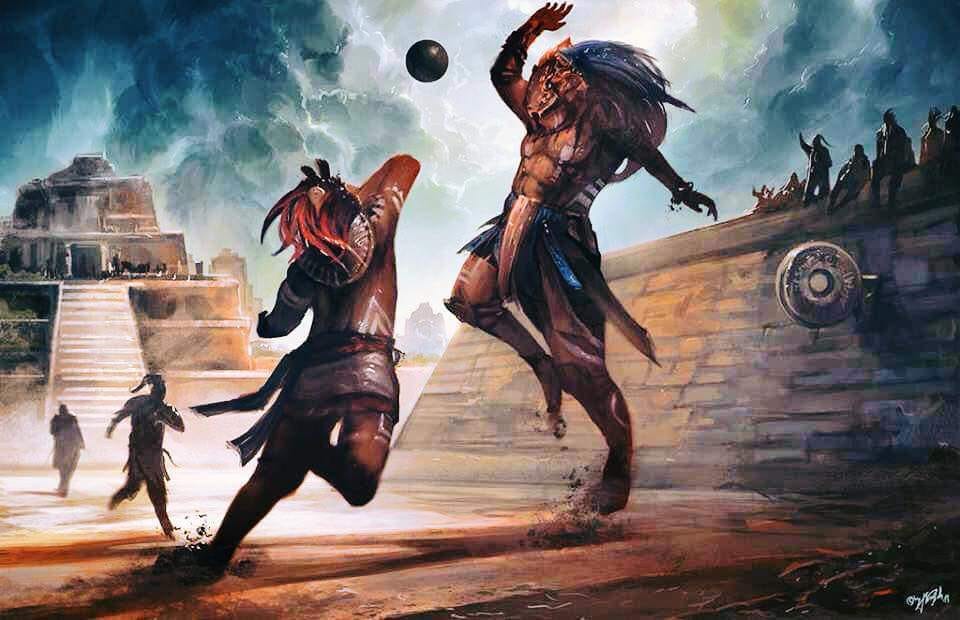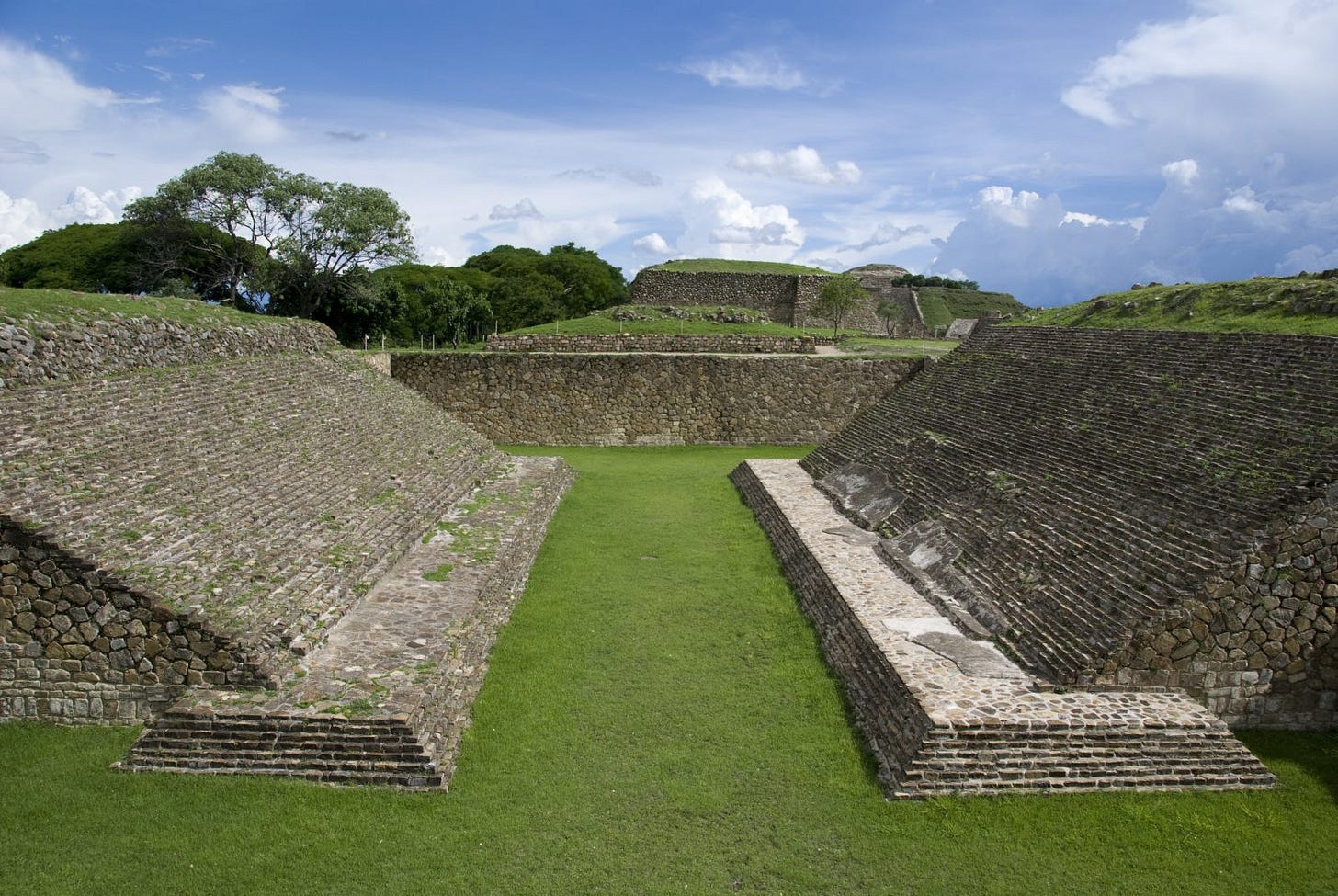The Evolution of Sports Culture
from 'Juego de Pelota' to modern football, basketball, and soccer
Sports, Tech, Biz is a weekly newsletter that features insights and analysis of the sports business. If you are not already a subscriber, join 1,000+ founders, investors, and professionals who read it every week:
The Evolution of Sports Culture
Sports practices are more than three thousand years old.
Sports in society have changed in form and technology, and even the meanings attached to them have evolved.
Nevertheless, to learn about where we are right now, I believe it’s essential always to go back to history to discover its roots. How did sports look like thousands of years ago? In which ways did it evolve? What seemed normal before that would sound crazy today?
In today’s article in the magazine, we’ll explore a particular sport that existed long before society invented basketball, football, or baseball. A game that happened from tiny courts found throughout small Mexican villages to huge courts in Chichen-Itza —the Mesoamerican ballgame.
The Mesoamerican Ballgame
The Mesoamerican ballgame — known as Pitz in Mayan, Pok-ta-Pok in English, and Juego de Pelota in Spanish — has existed since around 1650 BCE.
Ancient Mesoamerica’s territory covered most of Mexico, Honduras, Guatemala, Belize, and El Salvador. The discovery of over two thousand courts in such regions shows how popular and influential the sport was for ancient cultures.
Different areas had different sports versions with different rules and customs, but the game was generally the same.
Mesoamerican cultures played the Juego de Pelota with an ulama rubber ball to score points in a ‘hoop’ in a court of walls and end zones.
Teams accumulate points by passing the ball through the rings on the wall or striking markers in the opposite team's end zone.
Athletes could not use their hands but controlled the ball by hitting it with the upper arms, hips, and thighs.
Dreamworks did great recreating a ball game in a Road to El Dorado movie scene. Check it out:
More than a Game
Aztecs considered Pok-ta-Pok as more than just a game, as it had many levels of meanings;
Recreational: indulged in by most adolescent boys;
Public entertainment: where enthusiastic spectators actively gambled on the results;
Gladiatorial ritual: where they killed captives in rigged ballgames in the form of sacrifice;
Due to a lack of evidence, it is unclear if they executed the losing team, the losing captain, or the victorious crew.
Alternatively, Mayan literature suggests that they perceived ballcourts to be entryways to the underworld;
“Sacred places where man and god met.”
While they wouldn’t execute every athlete who played Pok-ta-Pok, the game's religiousness often encouraged violence, and frequently, people wanted to see blood.
During the Spanish Conquest of the Aztecs in 1519-21, the Mesoamerican ballgame shocked the conquerors. They’d never seen anything like it before.
The conquerors admired Pitz athletes' skills. They were particularly thrilled by the rubber ball (a material unknown to them) due to its ability to bounce more than any other material they knew.
The Evolution of the Ballgame
The incorporation of the rubber ball significantly transformed European ball games and sports.
You can think about the development of the Mesoamerican ballgame a lot, like the evolution of the arena games in Roman antiquity, where violence was celebrated rather than restricted.
However, the difference between the gladiator fights at the Coliseum and Pitz is that Mayans and Aztecs saw the court as a religious center. The Coliseum was a facility for sheer entertainment.
The Spanish conquerors eventually vanished from the game from Mesoamerica due to its connection with religiosity. Nevertheless, the prehispanic game remains an excellent case study of society and modern sports.
The Takeaway
What was normal before (i.e., sacrifices, blood, religiosity) would be deemed crazy today.
Modern sports take safety very seriously.
Although we don’t sacrifice losing sports teams today, it’s fascinating to think about what seems ‘normal’ for us now but may sound crazy in the future.
Take boxing or rugby, for instance; violence in these sports is evident. But we tell ourselves that it’s ‘normal’! Yet, the recurrence of violence in these sports should lead us to consider whether there is inherent ritualized warfare or simple entertainment.
Learning about the Mesoamerican ballgame, history, and sports evolution should help us understand more about sports culture and its role in society.






